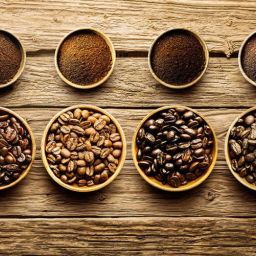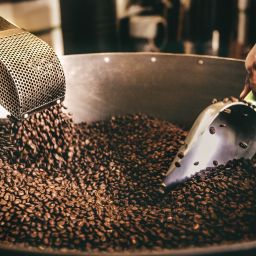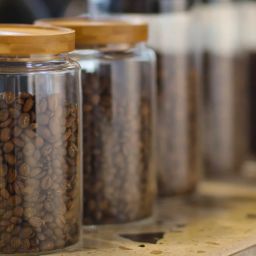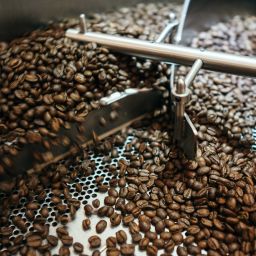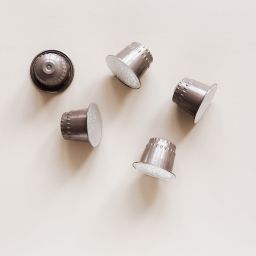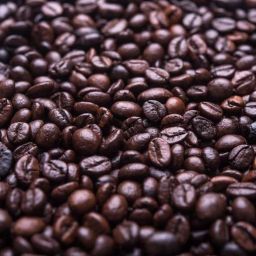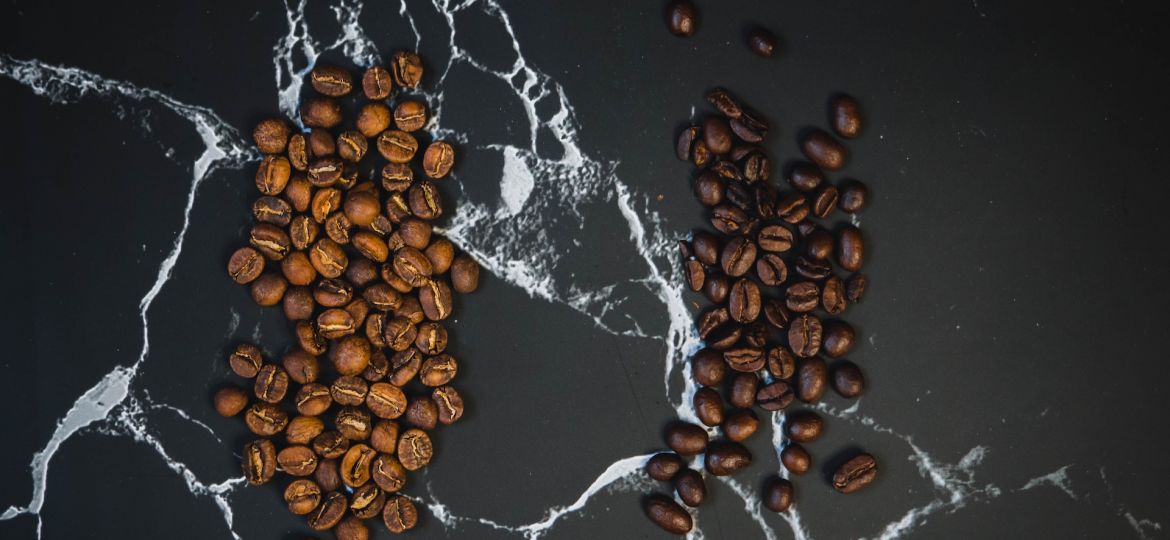
When we talk about coffee, two names often pop up: Arabica and Robusta. These aren’t just fancy coffee terms; they represent the two most popular types of coffee beans in the world. Here’s a quick rundown:
- Arabica: Known for its sweet, soft taste and higher acidity. It’s often considered the more refined and flavorful option.
- Robusta: Packs a stronger, harsher taste and has more caffeine. It’s typically less expensive and used in many espresso blends for that extra kick.
In the coffee market, these two are like the Coke and Pepsi of the coffee world. Arabica generally takes the lead in popularity, but Robusta holds its own, especially in blends and instant coffee markets.
Historical Background
Arabica and Robusta have quite the backstory. Arabica, the more ancient of the two, originated in the highlands of Ethiopia. It’s been a beloved bean for centuries, spreading its roots globally.
Robusta, on the other hand, entered the scene a bit later. Discovered in the Congo, it quickly became popular for its resilience and higher caffeine content. It’s like the tough younger sibling in the coffee family.
Physical Characteristics
Let’s talk looks and living conditions:
- Arabica Beans:
- Shape: More oval and flat.
- Color: Generally lighter.
- Plant Size: Taller, with an open branching system.
- Growing Conditions: Prefers cooler, subtropical climates. Higher altitudes are its jam.
- Robusta Beans:
- Shape: Smaller, rounder.
- Color: Darker when raw.
- Plant Size: Shorter, more resilient.
- Growing Conditions: Can handle hotter, harsher environments. Low altitudes work fine.
These physical differences aren’t just for show; they play a big part in the beans’ flavor profiles and where they can be grown. Robusta’s resilience is a key factor in its widespread cultivation, especially in regions less suitable for the more delicate Arabica.
Arabica Coffee
Robusta Coffee
Cultivation and Growing Conditions
When it comes to growing these beans, Arabica and Robusta are as different as night and day.
- Arabica:
- Climate: Loves a cool, misty mountain vibe. Think subtropical regions with plenty of rain.
- Altitude: High altitudes are its playground, usually between 600 to 2,200 meters.
- Growth Cycle: It’s a bit of a slow grower, taking about 4 to 7 years to bear fruit.
- Yield: Produces less per hectare compared to Robusta, making it more expensive.
- Robusta:
- Climate: Tough as nails, it thrives in hotter, harsher climates.
- Altitude: Low altitudes, even sea level, are perfectly fine.
- Growth Cycle: Quick and efficient, maturing in just 2 years and producing fruit every 6 to 8 months.
- Yield: More beans per hectare mean it’s generally cheaper to produce.
Arabica might be the diva, requiring specific conditions and more care, but its delicate nature contributes to its unique flavors. Robusta, the hardy one, can grow in conditions where Arabica would just give up.
Chemical Composition
The buzz in your cup comes down to chemistry. Let’s break it down:
- Caffeine Content:
- Arabica: Lighter on caffeine, it contains about 1.5% of its weight in caffeine.
- Robusta: Packs a punch with around 2.7% caffeine. That’s almost double!
- Sugar Content:
- Arabica: Sweeter and smoother, thanks to almost twice the sugar content of Robusta.
- Robusta: Less sugar means a more bitter taste.
This chemical makeup is crucial. Arabica’s lower caffeine and higher sugar levels give it a smoother, sweeter taste, while Robusta’s high caffeine content contributes to its strong, bitter flavor.
Taste and Flavor Profiles
Now, let’s talk flavor, because that’s what really matters, right?
- Arabica:
- Flavor: Generally sweeter, with hints of chocolate, nuts, and fruits.
- Acidity: Higher acidity, which adds to its range of flavors and makes it more aromatic.
- Roasting: Light to medium roasts bring out its best qualities.
- Robusta:
- Flavor: Stronger, harsher, and more bitter. Think earthy, woody, and sometimes nutty.
- Acidity: Lower acidity, contributing to its bold, heavy taste.
- Roasting: Dark roasts suit it well, enhancing its robust character.
The roasting process plays a huge role in flavor development. For Arabica, a lighter roast can highlight its delicate, nuanced flavors. Robusta, with its bolder profile, often benefits from a darker roast, which complements its inherent strength and full-bodied nature.
So, whether you’re sipping a light, fragrant Arabica or a strong, bold Robusta, remember, it’s all about the beans and how they’re roasted. Each type has its own unique charm, and the best part is exploring and finding your favorite.
Market Share and Economic Aspects
In the world of coffee, Arabica and Robusta are like the yin and yang, each holding its own in the market.
- Arabica:
- Market Share: It’s the star, making up about 60-70% of the world’s coffee production.
- Price: Generally pricier, thanks to its preferred taste and more demanding cultivation requirements.
- Robusta:
- Market Share: Though it plays second fiddle, it’s crucial, especially for blends and instant coffee.
- Price: More wallet-friendly, due to easier cultivation and higher yields.
The economic dance between these two is fascinating. Arabica’s higher price tag reflects its status as the more sought-after bean, often associated with specialty coffees and high-end blends. Robusta, meanwhile, keeps the world’s espresso machines and instant coffee jars full, thanks to its stronger flavor and lower cost.
Popular Blends and Uses
When it comes to coffee blends and uses, Arabica and Robusta each have their fan base and special roles.
- Arabica in Blends:
- Role: Often the main star in high-quality blends.
- Preferred Use: Ideal for black coffee and specialty drinks where flavor nuances are key.
- Robusta in Blends:
- Role: Adds body and crema to blends, especially in espressos.
- Preferred Use: Common in espresso blends for that extra kick and fuller mouthfeel.
Blends are where these beans really shine. A good blend can balance Arabica’s aromatic qualities with Robusta’s strength and body. For instance, in espresso, a touch of Robusta can add that perfect layer of crema and a bold flavor that stands up to milk and sugar.
And it’s not just about taste. The choice of beans can also affect the caffeine level, mouthfeel, and even how your coffee looks in the cup. Whether you’re a fan of a smooth, mild latte or a strong, bold espresso, there’s a blend out there with your name on it.
Health Benefits and Concerns
Coffee isn’t just a wake-up call; it’s a cup full of health perks and some concerns too.
- Caffeine Content:
- Arabica: Lower caffeine, gentler on your system.
- Robusta: High caffeine, great for a kick but can be too much for some.
- Antioxidant Properties:
- Both types are rich in antioxidants, which are great for fighting off those pesky free radicals.
The key is balance. While Arabica’s lower caffeine content is easier on the nerves and sleep patterns, Robusta’s high caffeine can be a boon for those needing an extra boost. However, too much caffeine can lead to jitters or disrupted sleep. Remember, moderation is king!
Consumer Preferences and Perceptions
What’s in your coffee cup is often a matter of personal taste and perception.
- Taste Preferences:
- Arabica Lovers: Often prefer a smoother, more nuanced flavor.
- Robusta Fans: Go for a stronger, more robust cup.
- Perception of Quality and Value:
- Arabica: Seen as the more premium choice, often associated with specialty coffee.
- Robusta: Valued for its strength and affordability, especially in blends.
Consumer choices often reflect a blend of taste preference, perceived quality, and value for money. Arabica, with its rich flavor profile, tends to be the go-to for coffee aficionados. Robusta, meanwhile, holds its own among those who crave a stronger taste or are looking for a more budget-friendly option.
The world of coffee is diverse, and thankfully, there’s something for everyone. Whether you’re sipping a single-origin Arabica or a robust Robusta blend, it’s all about what you love in your cup.
FAQs
Let’s dive into some of the most burning questions coffee lovers have about Arabica and Robusta.
- Which has more caffeine, Arabica or Robusta?
- Answer: Robusta wins this round. It has almost double the caffeine content of Arabica.
- Is Arabica coffee better than Robusta?
- Answer: “Better” is subjective. Arabica is often preferred for its smoother, sweeter taste, but Robusta has its own strong, bold charm.
- Can you mix Arabica and Robusta beans?
- Answer: Absolutely! Many blends do this to balance flavor, body, and caffeine content.
- Which is more expensive, Arabica or Robusta?
- Answer: Arabica typically costs more due to its more delicate cultivation requirements and preferred flavor profile.
- Are there any health differences between the two?
- Answer: The main difference lies in their caffeine content, which can affect individuals differently based on their sensitivity to caffeine.
Conclusion
In the grand coffee debate of Arabica vs. Robusta, it’s clear that both have their unique charms and challenges.
- Arabica: The more delicate, nuanced bean, loved for its sweet, fruity flavors.
- Robusta: The tough, bold contender, known for its strong, earthy notes and higher caffeine kick.
Choosing between them? It boils down to personal preference. Whether you crave the gentle, aromatic experience of Arabica or the robust, energetic punch of Robusta, there’s a coffee out there for you. And for those who can’t decide, blends offer the best of both worlds.
At the end of the day, coffee is more than just a drink; it’s an experience, a ritual, and for many, a passion. So, whether you’re team Arabica, team Robusta, or somewhere in between, enjoy your brew just the way you like it.


